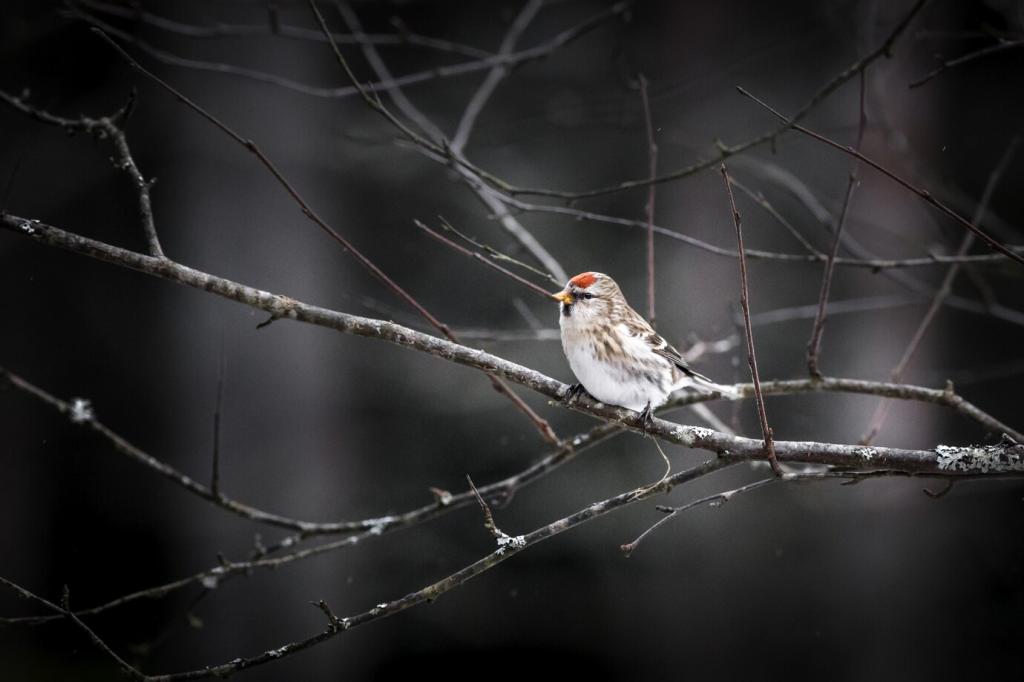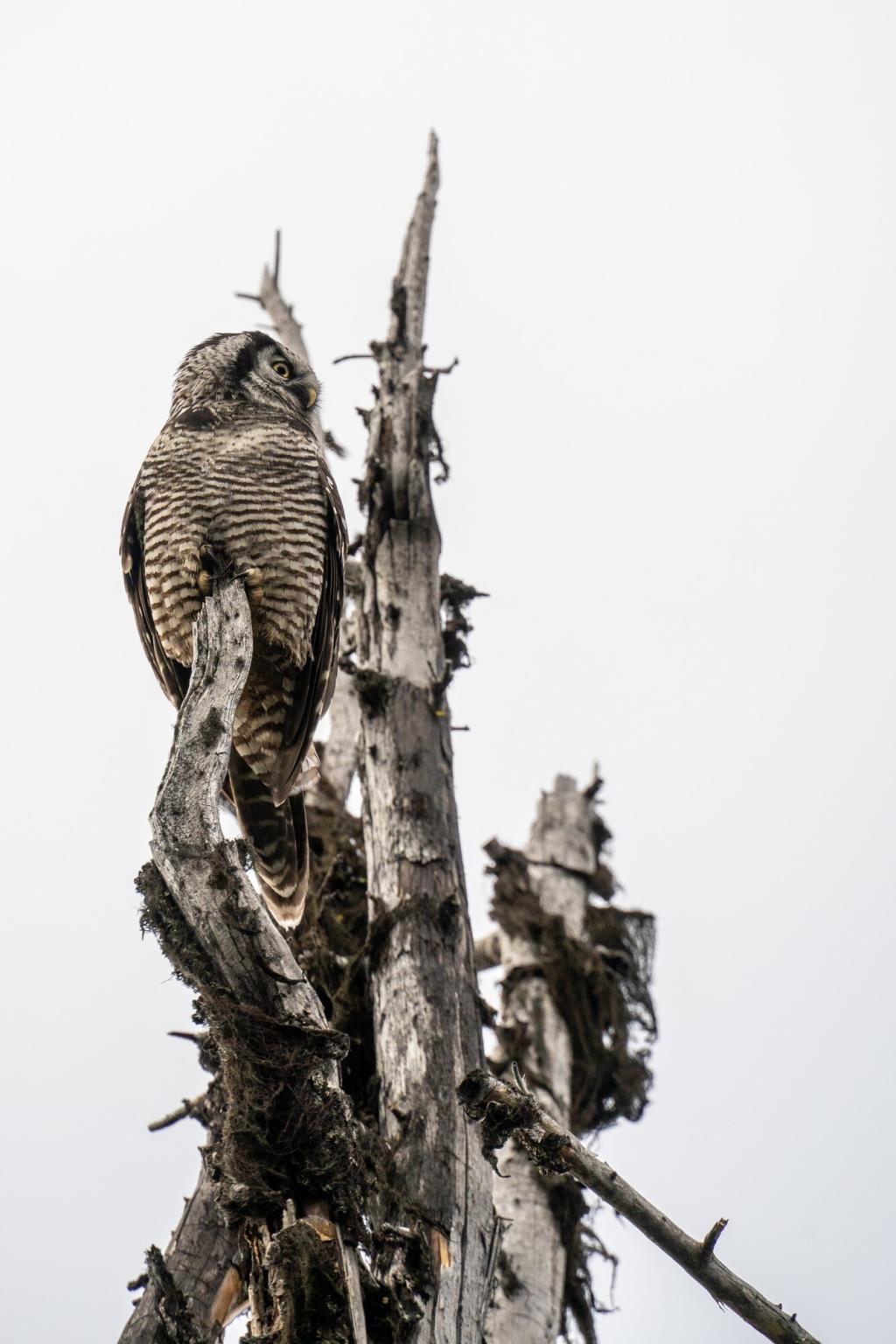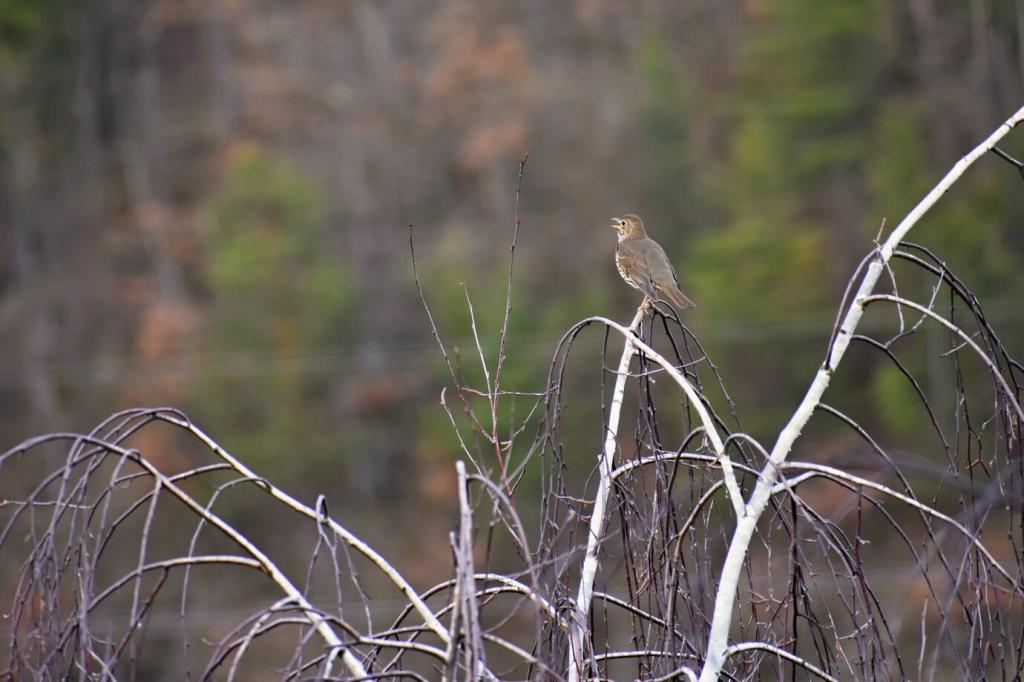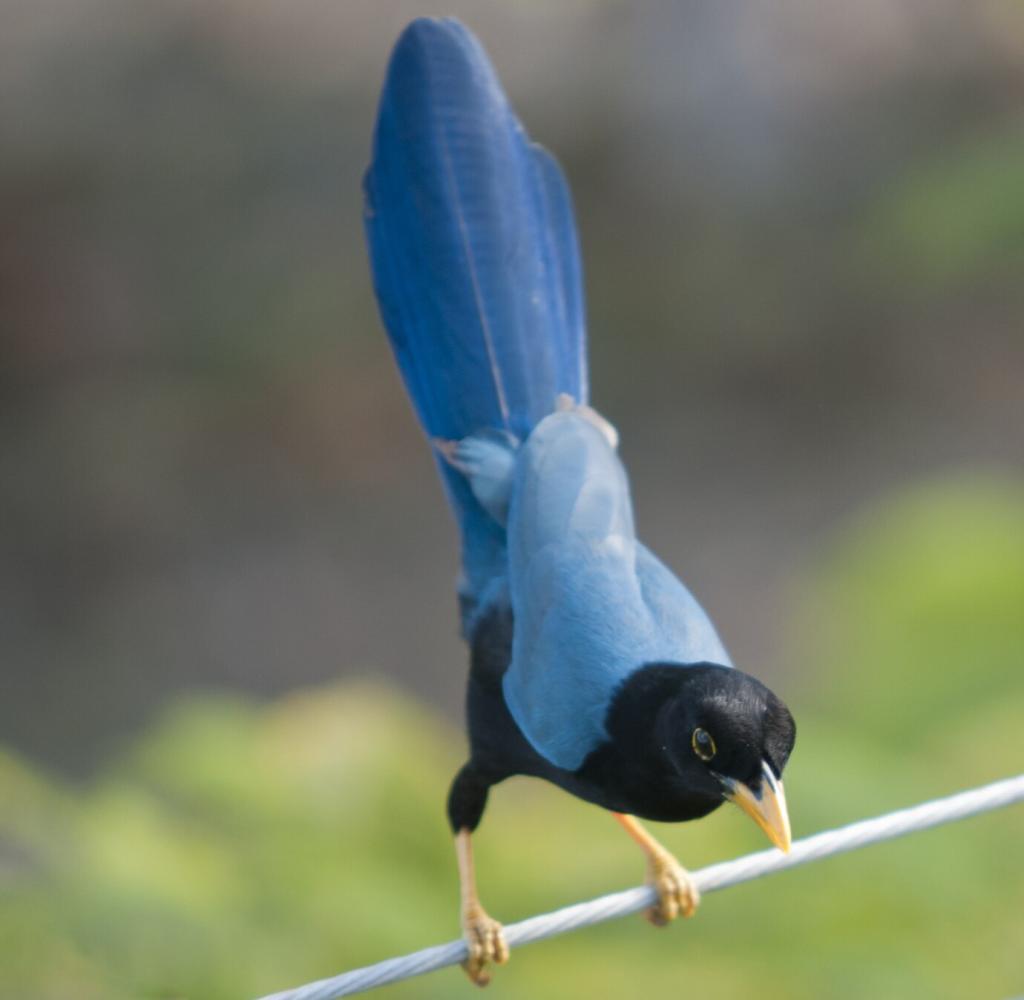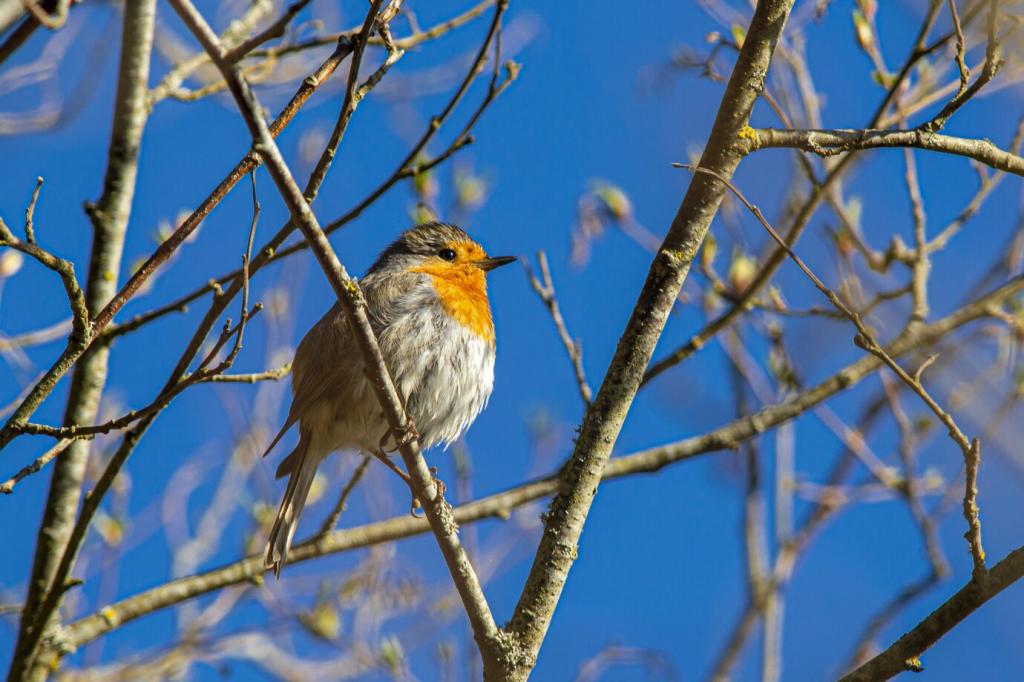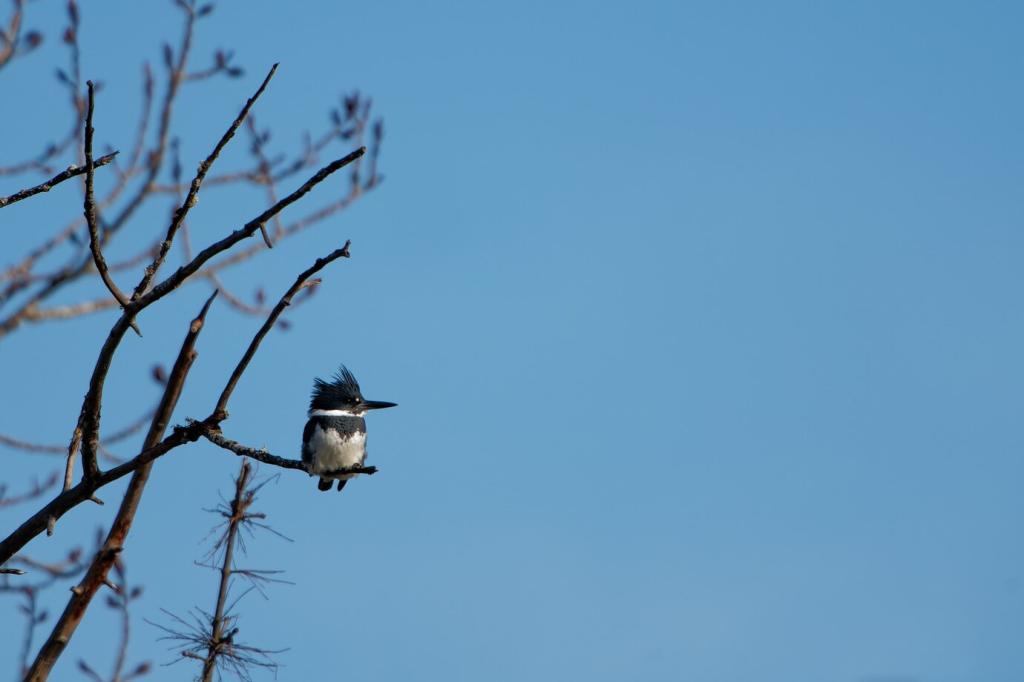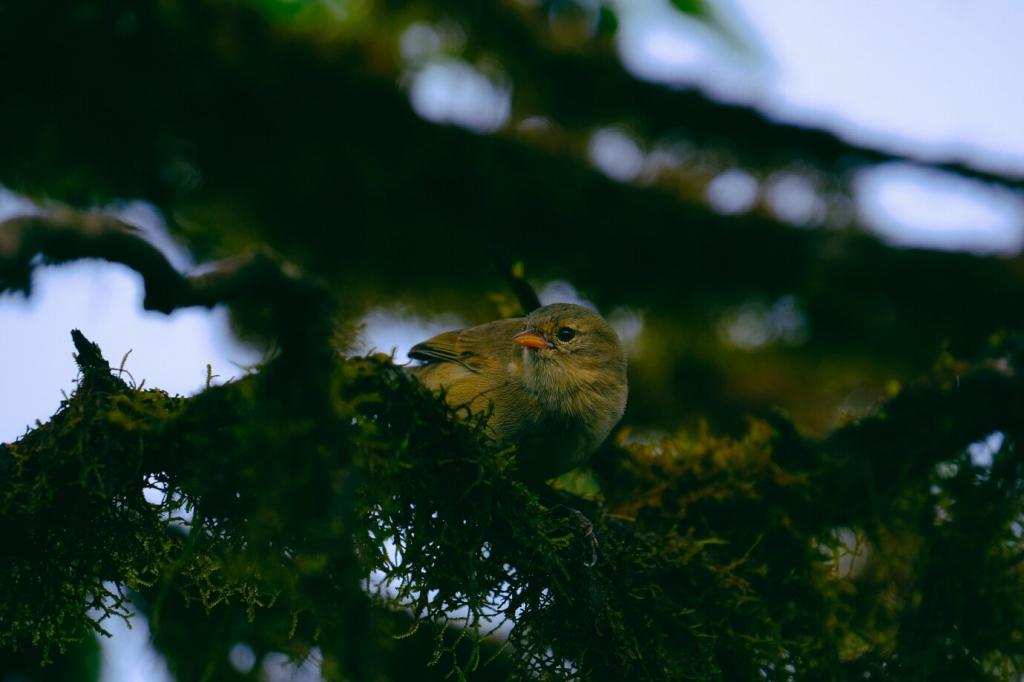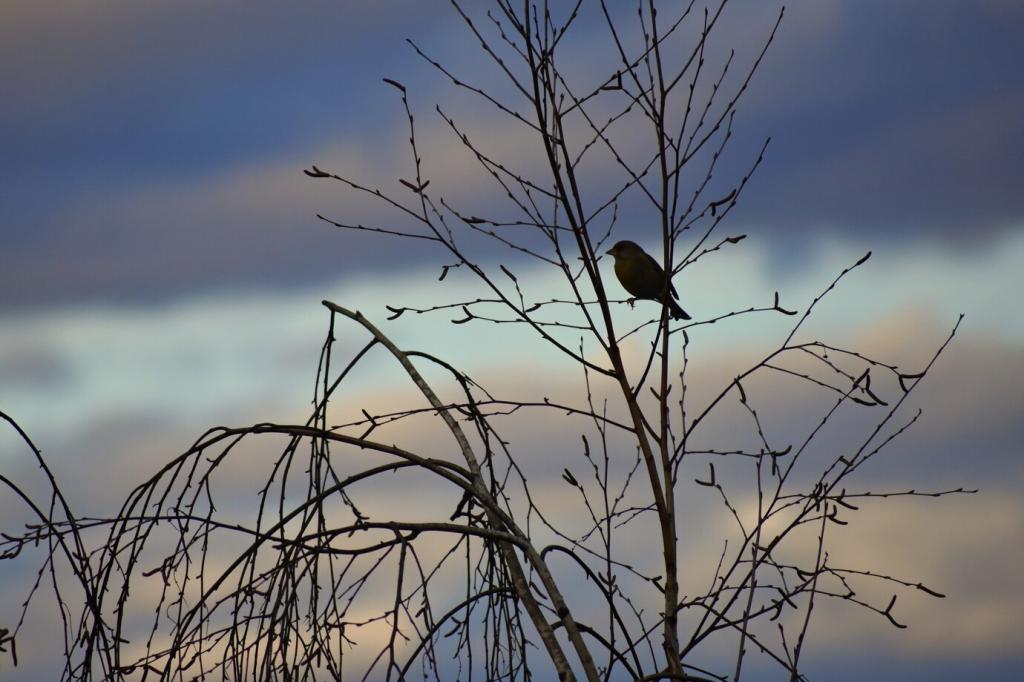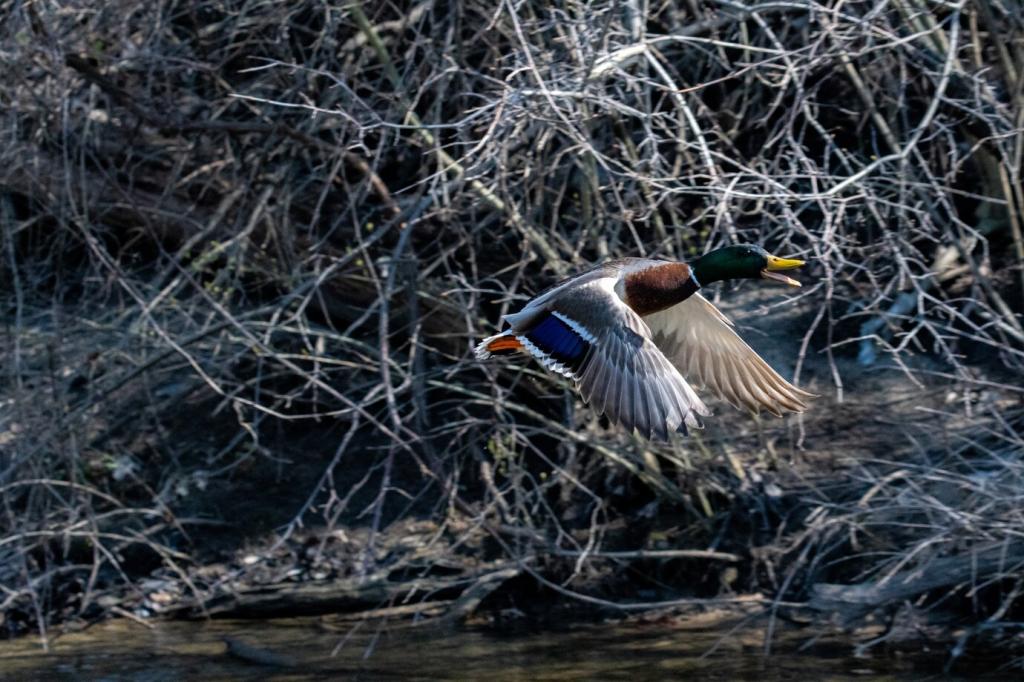Cool Heads under Hot Skies: Evaporative and Radiative Cooling
Many species—nightjars, cormorants, herons—vibrate the thin floor of the mouth, a motion called gular flutter, to evaporate moisture with minimal muscular effort. Unlike heavy panting, it curbs alkalosis risk while shedding heat efficiently. On blistering afternoons, watch a heron: the barely visible quiver beneath its bill is life-saving thermoregulation at work.
Cool Heads under Hot Skies: Evaporative and Radiative Cooling
Thermal cameras show toucan bills glowing like radiators at dusk as blood flow increases to dump excess heat. Storks and some raptors similarly vent warmth through legs and bare facial skin. These adjustable “thermal windows” open and close via vasodilation, permitting fine control when shade, breezes, and behavior alone cannot keep temperatures safe.

